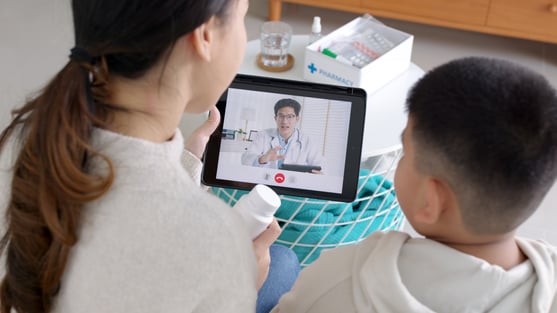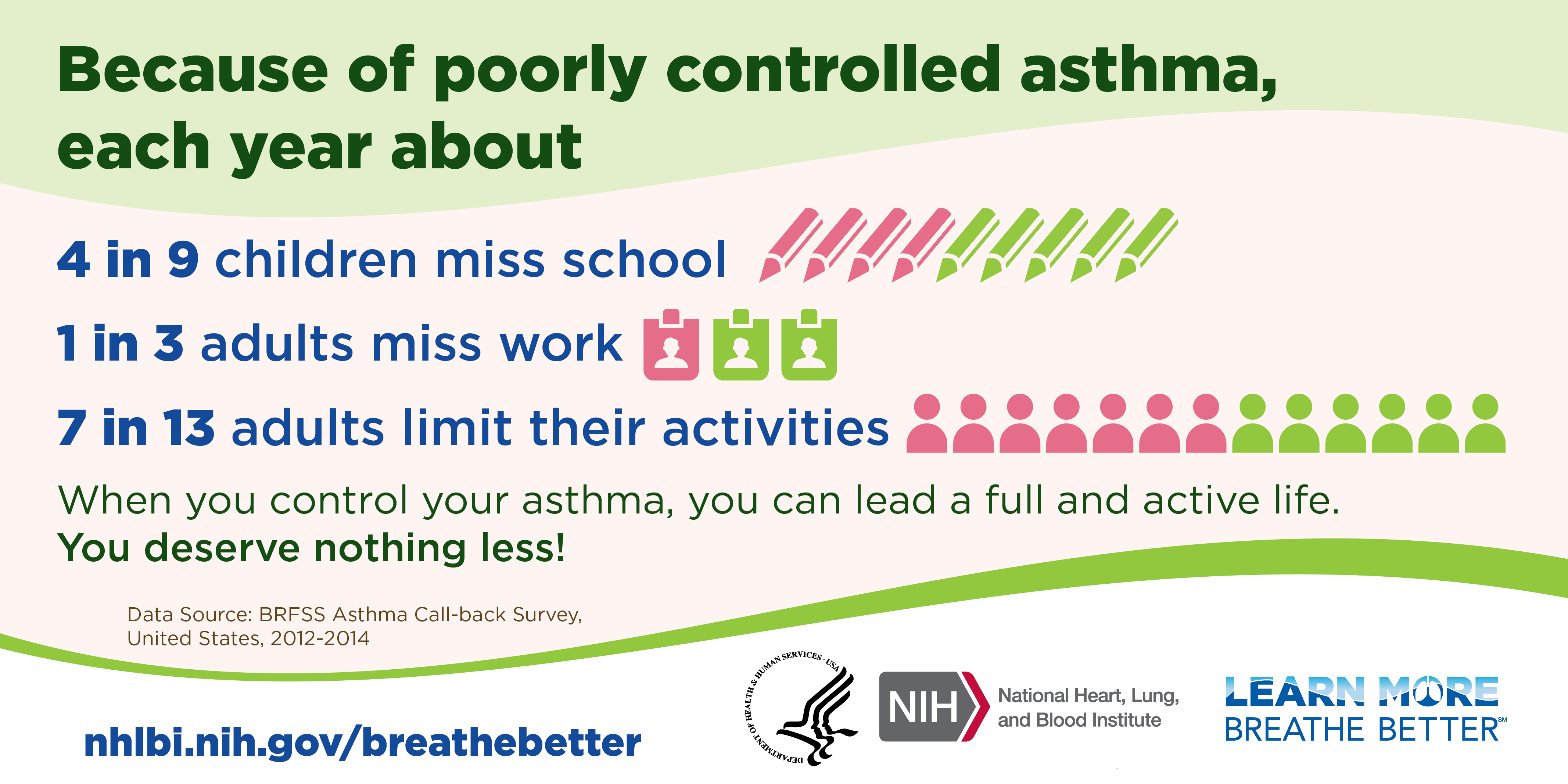According to the Asthma and Allergy Foundation of America 25 million Americans have asthma (1 in 13)—8 percent of adults and 7 percent of children. It is more common in adult women than adult men, and is the leading chronic disease in children.
Asthma is a chronic respiratory condition that can be treated, but not cured. Asthma symptoms range from mild to severe and include shortness of breath, chest tightness, chronic coughing, and wheezing. Milder symptoms tend to go away on their own with minimal treatment, while more severe symptoms require intervention. Intense symptoms often inhibit everyday activities, and the quality of life of those with asthma. They also can potentially lead to an asthma attack and/or hospitalization.
Treatment of Asthma
Patients with asthma often have to visit their doctor frequently to maintain control over their condition and make adjustments to their treatment plan. Frequent follow-ups and breathings tests are common. For most patients, visits to a primary care doctor or specialist are expensive, costing the patient about $3,266 per year (and this does not include transportation costs or lost wages).
For patients with asthma, an effective management plan or Asthma Action Plan is essential. In partnership with their Pulmonologist and primary care provider, patients with asthma can develop plans that combine exercise, ways to avoid triggers, what to do in an emergency, and their medication regimen. Today, many providers are incorporating remote patient monitoring and telehealth tools into their patients’ management plans to make care more convenient, continuous, and effective.
Incorporating Remote Monitoring and Telehealth Into Asthma Care
For asthmatic patients, telehealth and RPM can be efficacious tools. There’s many benefits of incorporating telehealth into asthma care, including:
- Reduced transportation burden
- Managed symptoms
- Increased medication adherence
- Reduced costs for the patient (and provider)
- Improved access to care
One of the key benefits of incorporating telehealth is that it eliminates the need for travel. Oftentimes, patients live in rural areas, far away from their primary care provider or specialist, and having to travel to the office or clinic introduces a huge burden. In many cases, the patient's need is simple, for example they may just need a refill of their rescue inhaler or have a question about their medication. Through telehealth technology, the patient can see their provider virtually, respond to symptom surveys and engage in biometric monitoring.
Virtual Visits, Symptom Surveys, Biometric Monitoring, and Medication Reminders
Virtual Visits
Through virtual visits, the patient can check in with their provider from afar. Whether to refill a prescription, follow up to a recent appointment, or simply just check-in, telehealth allows the provider to extend access to care in a way that is convenient and hassle-free for the patient. Virtual visits can also improve care continuity by providing more opportunities for patient-provider touch points.

Symptom Surveys
Through their telehealth tablet, the patient can answer essential symptom questions that provide insight into their condition. The provider then sees the responses in real time, and intervenes accordingly. Examples of questions, per the American Lung Association include:
- How often do you have asthma symptoms during the day, such as coughing, wheezing, chest tightness or shortness of breath?
- Do you wake up at night with asthma symptoms, such as coughing, wheezing, chest tightness or shortness of breath?
- How often do you use your quick-relief or rescue inhaler [insert time frame] (i.e., albuterol medicine) to relieve asthma symptoms?
- Do you have difficulty performing normal activities, such as walking, climbing stairs, daily chores or playing with the kids?
Many providers add custom symptom surveys dependent on the patients’ unique treatment plan and diagnosis.
Biometric Monitoring and Other Devices
The use of an electronic respiratory monitor is increasingly serving to support asthma patients and help optimize asthma management.
Examples of devices include:
- Bluetooth Spirometer that allows asthma patients to easily test lung function and assess lung symptoms
- Smart inhalers that include mouthpieces with integrated electronics that count actual drug doses based on drug discharge
- Wearables to predict and prevent asthma attacks
- Pulse Oximeter is used to grade severity of acute asthma
Medication Reminders
The medication regimen for patients with asthma differs from patient to patient depending on their condition severity and control of their disease. Regardless, medication adherence is crucial for all patients with asthma.
Medication reminders improve adherence by helping patients build a routine around their medication regimen. The provider sees in real time if a patient misses a dose, and is able to reach out to the patient to get them back on track.
Telehealth for Asthma Patients Supported in the Research
Across the world, research teams have explored the efficacy of telehealth for asthma management for both adults and children.
One 2019 meta-analysis published 9 in The Journal of Allergy and Clinical Immunology: In Practice, reviewed the effects of telemedicine on asthma control and the quality of life in adults. The meta-analysis, which reviewed 22 studies (10K+ participants) found that “combined tele-case management could significantly improve asthma control compared with usual care.”
An earlier 2016 study from the Annals of Allergy, Asthma & Immunology compared asthma outcomes over 6 months in children managed by telemedicine vs in-person visits. The study compared 100 kids with asthma who were seen in a doctor’s office to 69 kids who saw their doctors via telehealth. After 6 months, condition management among both groups was equal—”children with asthma seen by telemedicine or in-person visits can achieve comparable degrees of asthma control.”
The Future of Asthma Remote Monitoring
Telehealth has proven to maintain patient quality of care, while also increasing access and convenience for those who are out of reach of specialists or primary care providers. It helps patients adhere to their care plan and control their symptoms while maintaining a good quality of life.

